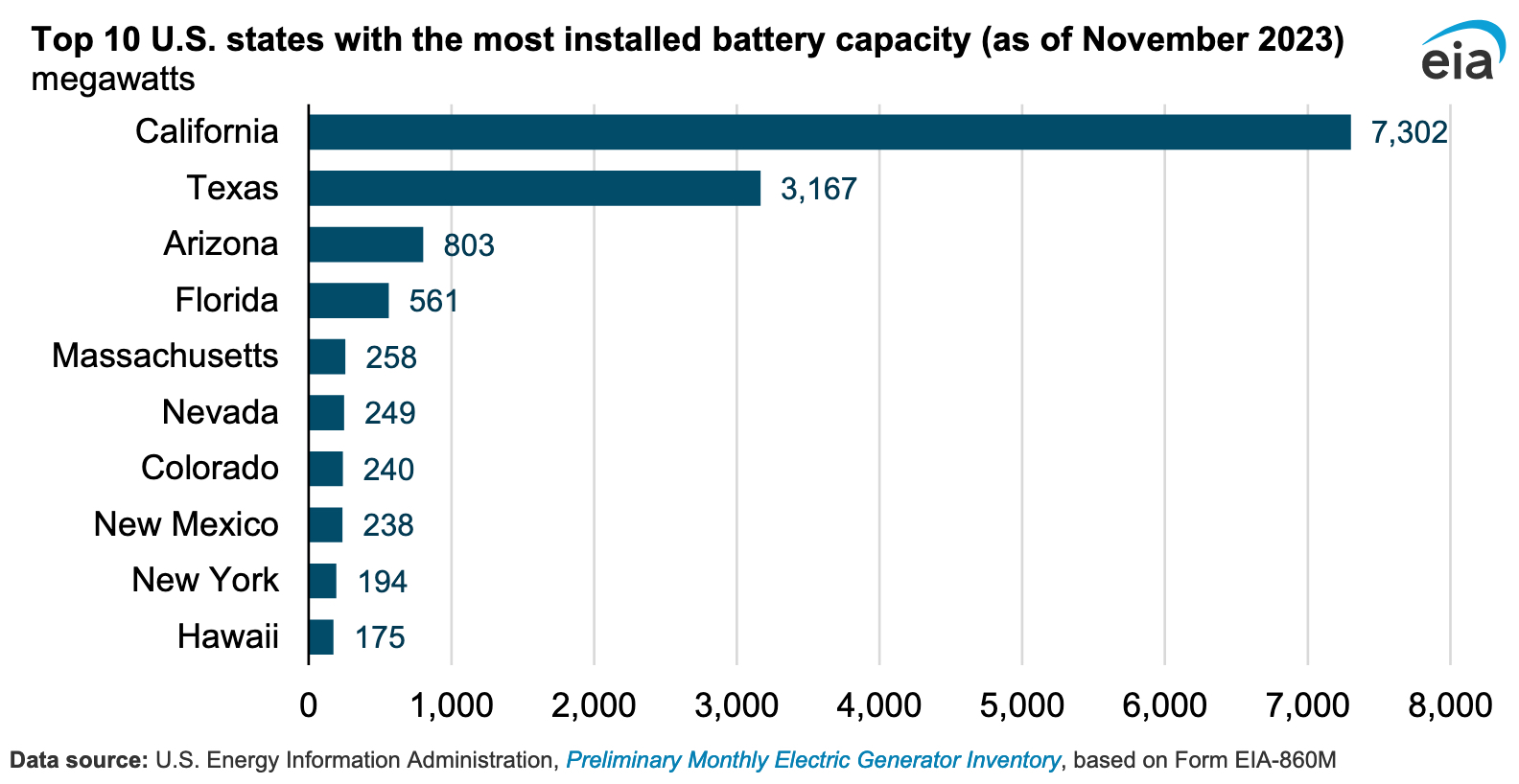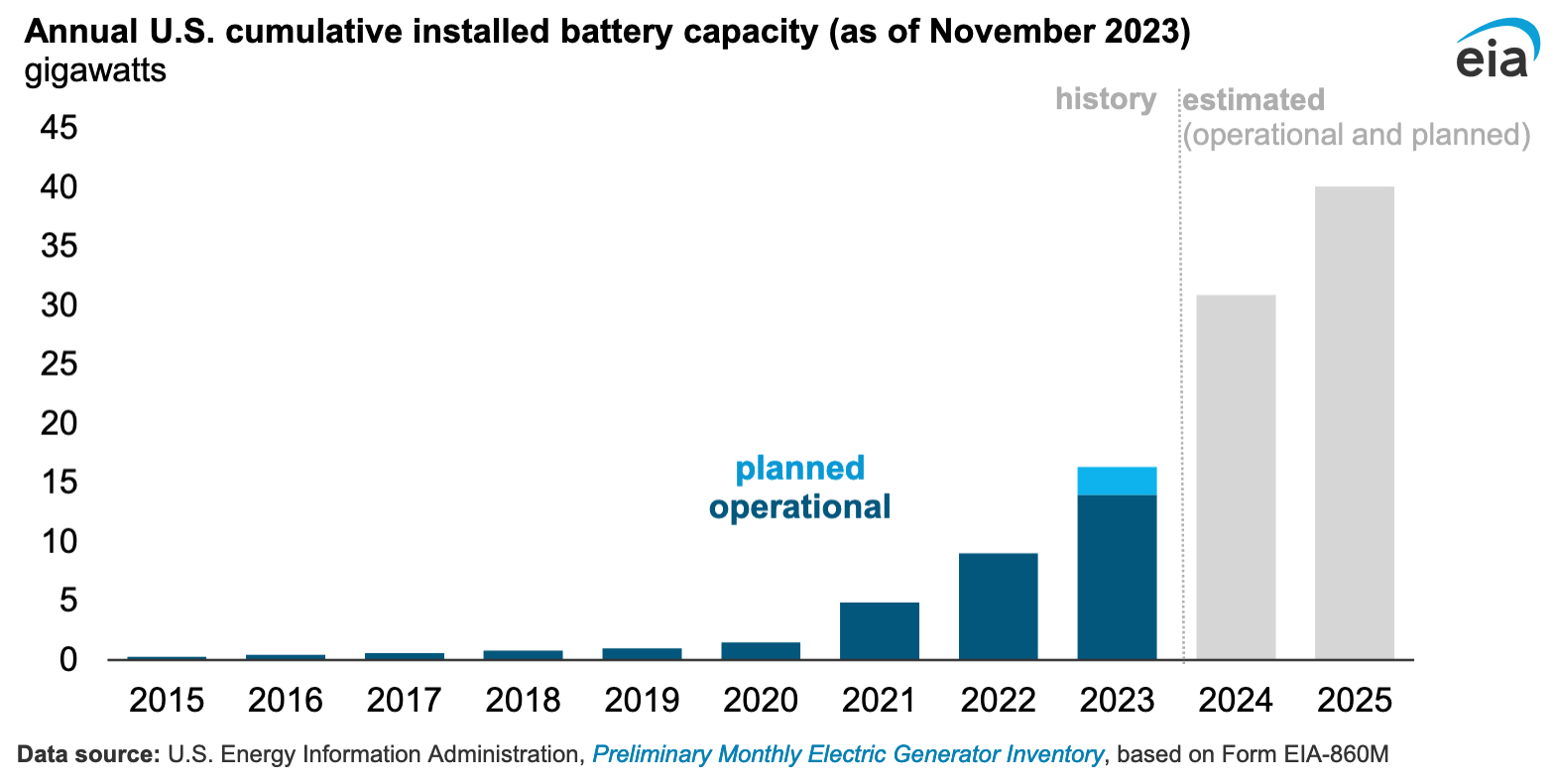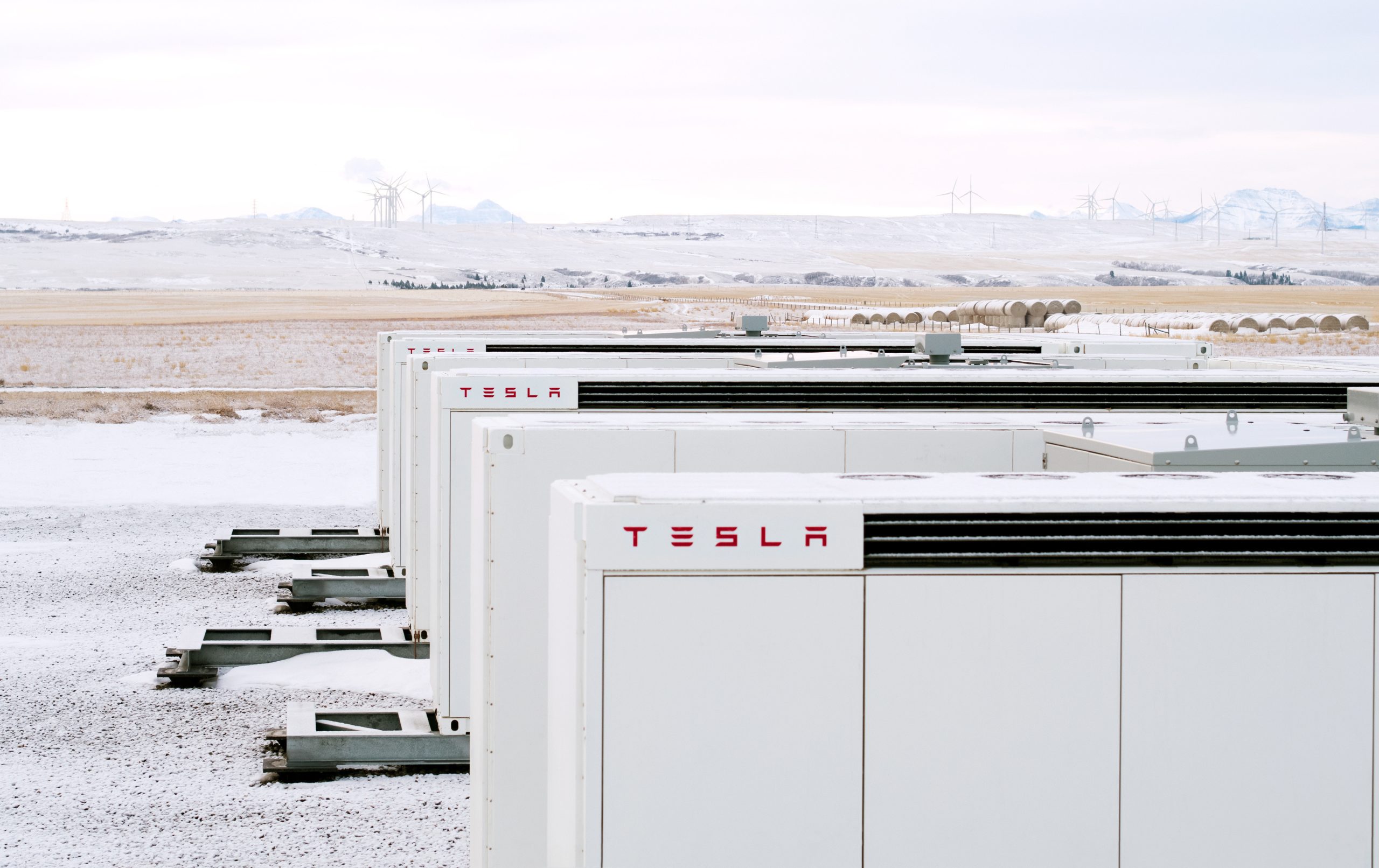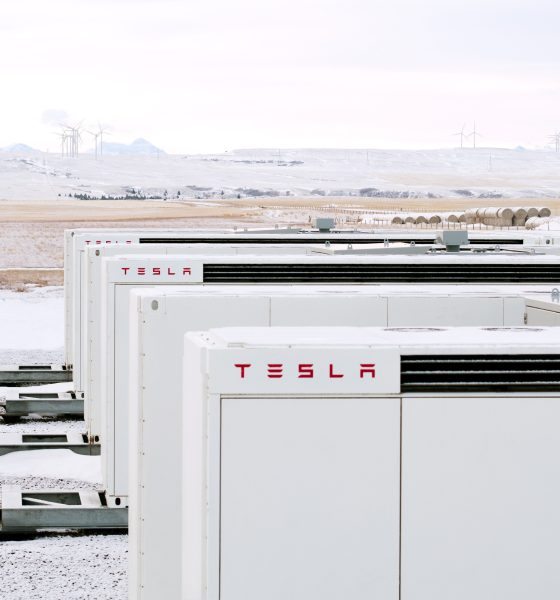Installation of large-scale energy storage systems is expected to continue increasing in the U.S. throughout 2024, as championed by only a handful of states thus far.
According to data from the Energy Information Administration (EIA) shared on Tuesday, U.S. energy storage system deployment is expected to nearly double in 2024, with battery capacity forecasted to grow by 89 percent. As of November 2023, two U.S. states have installed substantially more energy storage systems than others, making up the vast majority of battery capacity available.
The data shows that California leads energy storage availability by a wide margin, with just over 7.3 GW (7,302 MW) of battery capacity installed. Texas follows in second with nearly 3.2 GW (3,167 MW) installed, while Arizona, Florida, and Massachusetts are next in the lineup.
You can see the full top 10 list for U.S. states with the most battery capacity installed below, courtesy of the EIA.
Credit: Energy Information Administration
The data takes into account planned storage system projects for the next two years, and the agency says developers are aiming to expand U.S. storage capacity by 30 GW by the end of 2024. As the EIA also notes, U.S. battery storage capacity has been increasing since 2021, and if the aforementioned goal is achieved, the country will have more energy storage than petroleum liquids, geothermal, wood and wood waste, or landfill gas by the end of this year.
There are over 300 utility-scale battery storage projects planned to be brought online by 2025, with roughly half of them being in Texas. Currently, the largest operating battery energy storage system (BESS) is a project operated by Vistra in Moss Landing, California, which has 750 MW of capacity and is located not far from Tesla’s 182.5 MW Megapack site in the same city.
Four out of five of the largest BESS installations set to take place in 2024 or 2025 are in Texas, as listed below:
- Lunis Creek BESS SLF (Texas, 621 MW)
- Clear Fork Creek BESS SLF (Texas, 600 MW)
- Hecate Energy Ramsey Storage (Texas, 500 MW)
- Bellefield Solar and Energy Storage Farm (California, 500 MW)
- Dogwood Creek Solar and BESS (Texas, 443 MW)
As for the recent increases in storage capacity, the agency says that quickly increasing wind and solar generation fleets in California and Texas have increased the need for growth in the battery storage sector. With energy storage projects, utility operators are able to store power during times of low electricity demand and then deploy stored energy during times of peak demand.
Credit: Energy Information Administration
The news comes just a few days after Tesla Megapacks went live on the island of Oahu in Hawaii, enabling a 185 MW project that has helped the island move away from the use of coal. The project isn’t represented in the EIA’s dataset, since that data only accounts for installations through last November.
In addition to its grid-scale Megapacks, Tesla also offers smaller, residential-level Powerpacks to create what it calls Virtual Power Plants (VPPs), essentially forming giant, distributed batteries that customers can use to sell energy back to the grid in times of peak demand. Currently, Tesla has pilots for these programs in states including California, Texas and Massachusetts, along with the U.S. territory of Puerto Rico.
Tesla Powerwall owner earns $574 by participating in California’s VPP program
What are your thoughts? Let me know at zach@teslarati.com, find me on X at @zacharyvisconti, or send your tips to us at tips@teslarati.com.

Elon Musk
Elon Musk and Tesla AI Director share insights after empty driver seat Robotaxi rides
The executives’ unoccupied tests hint at the rapid progress of Tesla’s unsupervised Robotaxi efforts.

Tesla CEO Elon Musk and AI Director Ashok Elluswamy celebrated Christmas Eve by sharing personal experiences with Robotaxi vehicles that had no safety monitor or occupant in the driver’s seat. Musk described the system’s “perfect driving” around Austin, while Elluswamy posted video from the back seat, calling it “an amazing experience.”
The executives’ unoccupied tests hint at the rapid progress of Tesla’s unsupervised Robotaxi efforts.
Elon and Ashok’s firsthand Robotaxi insights
Prior to Musk and the Tesla AI Director’s posts, sightings of unmanned Teslas navigating public roads were widely shared on social media. One such vehicle was spotted in Austin, Texas, which Elon Musk acknowleged by stating that “Testing is underway with no occupants in the car.”
Based on his Christmas Eve post, Musk seemed to have tested an unmanned Tesla himself. “A Tesla with no safety monitor in the car and me sitting in the passenger seat took me all around Austin on Sunday with perfect driving,” Musk wrote in his post.
Elluswamy responded with a 2-minute video showing himself in the rear of an unmanned Tesla. The video featured the vehicle’s empty front seats, as well as its smooth handling through real-world traffic. He captioned his video with the words, “It’s an amazing experience!”
Towards Unsupervised operations
During an xAI Hackathon earlier this month, Elon Musk mentioned that Tesla owed be removing Safety Monitors from its Robotaxis in Austin in just three weeks. “Unsupervised is pretty much solved at this point. So there will be Tesla Robotaxis operating in Austin with no one in them. Not even anyone in the passenger seat in about three weeks,” he said. Musk echoed similar estimates at the 2025 Annual Shareholder Meeting and the Q3 2025 earnings call.
Considering the insights that were posted Musk and Elluswamy, it does appear that Tesla is working hard towards operating its Robotaxis with no safety monitors. This is quite impressive considering that the service was launched just earlier this year.
Elon Musk
Starlink passes 9 million active customers just weeks after hitting 8 million
The milestone highlights the accelerating growth of Starlink, which has now been adding over 20,000 new users per day.

SpaceX’s Starlink satellite internet service has continued its rapid global expansion, surpassing 9 million active customers just weeks after crossing the 8 million mark.
The milestone highlights the accelerating growth of Starlink, which has now been adding over 20,000 new users per day.
9 million customers
In a post on X, SpaceX stated that Starlink now serves over 9 million active users across 155 countries, territories, and markets. The company reached 8 million customers in early November, meaning it added roughly 1 million subscribers in under seven weeks, or about 21,275 new users on average per day.
“Starlink is connecting more than 9M active customers with high-speed internet across 155 countries, territories, and many other markets,” Starlink wrote in a post on its official X account. SpaceX President Gwynne Shotwell also celebrated the milestone on X. “A huge thank you to all of our customers and congrats to the Starlink team for such an incredible product,” she wrote.
That growth rate reflects both rising demand for broadband in underserved regions and Starlink’s expanding satellite constellation, which now includes more than 9,000 low-Earth-orbit satellites designed to deliver high-speed, low-latency internet worldwide.
Starlink’s momentum
Starlink’s momentum has been building up. SpaceX reported 4.6 million Starlink customers in December 2024, followed by 7 million by August 2025, and 8 million customers in November. Independent data also suggests Starlink usage is rising sharply, with Cloudflare reporting that global web traffic from Starlink users more than doubled in 2025, as noted in an Insider report.
Starlink’s momentum is increasingly tied to SpaceX’s broader financial outlook. Elon Musk has said the satellite network is “by far” the company’s largest revenue driver, and reports suggest SpaceX may be positioning itself for an initial public offering as soon as next year, with valuations estimated as high as $1.5 trillion. Musk has also suggested in the past that Starlink could have its own IPO in the future.
News
NVIDIA Director of Robotics: Tesla FSD v14 is the first AI to pass the “Physical Turing Test”
After testing FSD v14, Fan stated that his experience with FSD felt magical at first, but it soon started to feel like a routine.

NVIDIA Director of Robotics Jim Fan has praised Tesla’s Full Self-Driving (Supervised) v14 as the first AI to pass what he described as a “Physical Turing Test.”
After testing FSD v14, Fan stated that his experience with FSD felt magical at first, but it soon started to feel like a routine. And just like smartphones today, removing it now would “actively hurt.”
Jim Fan’s hands-on FSD v14 impressions
Fan, a leading researcher in embodied AI who is currently solving Physical AI at NVIDIA and spearheading the company’s Project GR00T initiative, noted that he actually was late to the Tesla game. He was, however, one of the first to try out FSD v14.
“I was very late to own a Tesla but among the earliest to try out FSD v14. It’s perhaps the first time I experience an AI that passes the Physical Turing Test: after a long day at work, you press a button, lay back, and couldn’t tell if a neural net or a human drove you home,” Fan wrote in a post on X.
Fan added: “Despite knowing exactly how robot learning works, I still find it magical watching the steering wheel turn by itself. First it feels surreal, next it becomes routine. Then, like the smartphone, taking it away actively hurts. This is how humanity gets rewired and glued to god-like technologies.”
The Physical Turing Test
The original Turing Test was conceived by Alan Turing in 1950, and it was aimed at determining if a machine could exhibit behavior that is equivalent to or indistinguishable from a human. By focusing on text-based conversations, the original Turing Test set a high bar for natural language processing and machine learning.
This test has been passed by today’s large language models. However, the capability to converse in a humanlike manner is a completely different challenge from performing real-world problem-solving or physical interactions. Thus, Fan introduced the Physical Turing Test, which challenges AI systems to demonstrate intelligence through physical actions.
Based on Fan’s comments, Tesla has demonstrated these intelligent physical actions with FSD v14. Elon Musk agreed with the NVIDIA executive, stating in a post on X that with FSD v14, “you can sense the sentience maturing.” Musk also praised Tesla AI, calling it the best “real-world AI” today.










